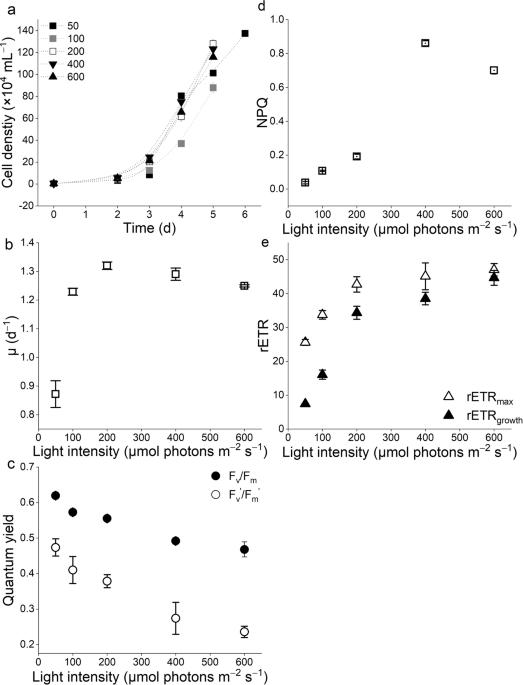一种茧石叶藻依靠光产生的甲烷可能会抵消其光合作用对二氧化碳封存的贡献
IF 8.1
1区 地球科学
Q1 ENVIRONMENTAL SCIENCES
引用次数: 0
摘要
许多浮游植物会产生甲烷,这是一种强效温室气体。然而,人们对它们的甲烷产生与光合作用之间的关系知之甚少,而光合作用是海洋固碳的动力。在这里,通过排除经典甲烷生成的可能性,我们证明了藻华形成的海洋微藻 Emiliania huxleyi 在光合作用过程中释放甲烷(在黑暗中不产生甲烷),同时在不同光照水平下生长,甲烷释放量与光合电子传递和碳固定呈正相关。在生长饱和的光照下,E. huxleyi 产生甲烷的最大速率约为 6.6 ×10-11 μg cell-1 d-1 或 3.9 μg g-1 particulate organic carbon d-1。在固定约 105 摩尔二氧化碳的同时,微藻释放了多达 7 摩尔甲烷。考虑到甲烷的全球升温潜能值高于二氧化碳,而且甲烷的海气通量过程复杂,因此应该对浮游植物甲烷生产的升温潜能值进行广泛评估。根据对培养浮游植物的实验室实验,浮游植物 Emiliania huxleyi 在光合作用过程中产生甲烷,这可能会抵消其碳封存潜力。本文章由计算机程序翻译,如有差异,请以英文原文为准。

Light-dependent methane production by a coccolithophorid may counteract its photosynthetic contribution to carbon dioxide sequestration
Many phytoplankton produce methane, a potent greenhouse gas. However, little is known about the relationship between their methane production and photosynthesis, which drives carbon sequestration in the oceans. Here, by ruling out the possibility of classical methanogenesis, we show that the bloom-forming marine microalga Emiliania huxleyi released methane during photosynthesis (did not generate it in darkness) while grown under different light levels, the amount of methane released correlated positively with photosynthetic electron transfer and carbon fixation. Under growth-saturating light, E. huxleyi produces methane at a maximal rate of about 6.6 ×10−11 μg cell−1 d−1 or 3.9 μg g−1 particulate organic carbon d−1. The microalga released up to 7 moles methane while fixing about 105 moles of carbon dioxide. Considering the higher global warming potential of methane than that of carbon dioxide and complicated processes involved in methane air-sea fluxes, the warming potential of phytoplankton methane production should be broadly evaluated. Phytoplankton Emiliania huxleyi produce methane during photosynthesis, which may counteract their carbon sequestration potential, according to lab experiments on cultured phytoplankton.
求助全文
通过发布文献求助,成功后即可免费获取论文全文。
去求助
来源期刊

Communications Earth & Environment
Earth and Planetary Sciences-General Earth and Planetary Sciences
CiteScore
8.60
自引率
2.50%
发文量
269
审稿时长
26 weeks
期刊介绍:
Communications Earth & Environment is an open access journal from Nature Portfolio publishing high-quality research, reviews and commentary in all areas of the Earth, environmental and planetary sciences. Research papers published by the journal represent significant advances that bring new insight to a specialized area in Earth science, planetary science or environmental science.
Communications Earth & Environment has a 2-year impact factor of 7.9 (2022 Journal Citation Reports®). Articles published in the journal in 2022 were downloaded 1,412,858 times. Median time from submission to the first editorial decision is 8 days.
 求助内容:
求助内容: 应助结果提醒方式:
应助结果提醒方式:


